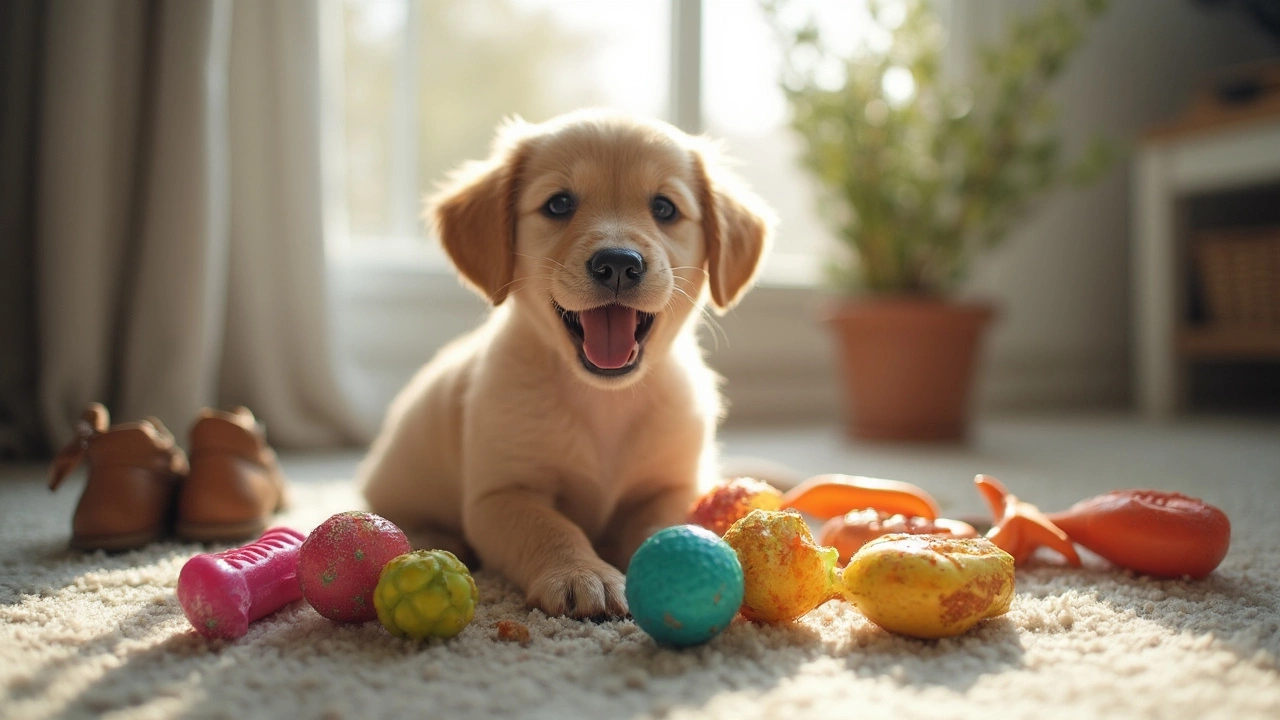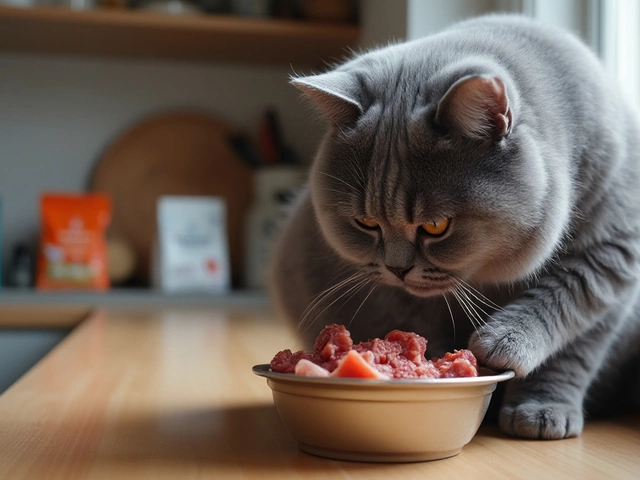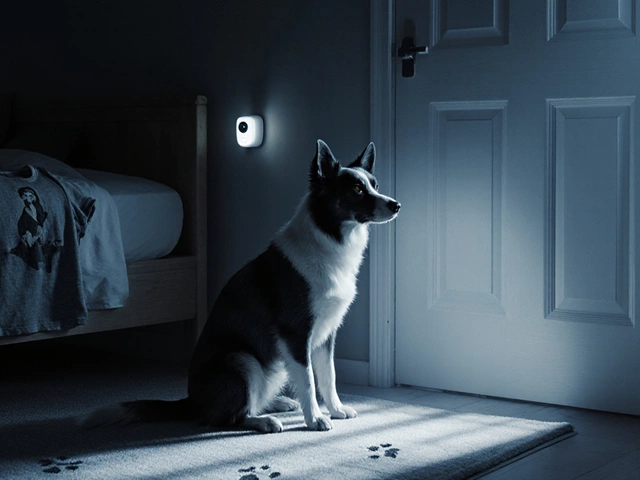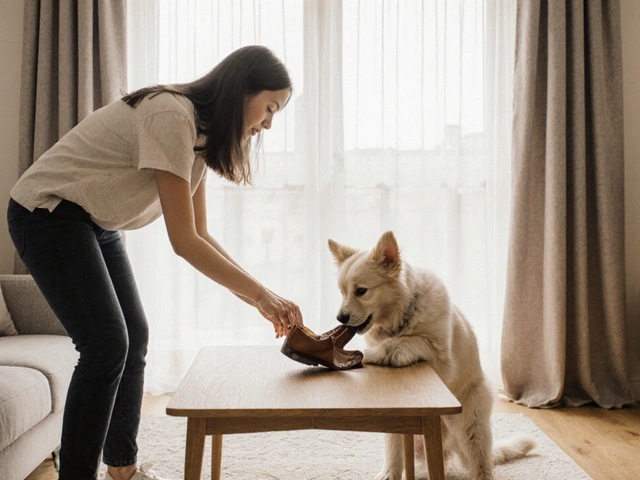Chewing might just be your puppy’s favorite hobby, and if you’re not ready for it, say goodbye to your shoes, cushions, and chair legs. Puppies chew for loads of reasons—teething pain, boredom, or just exploring the world. The trick is giving them the right things to chew, so they don’t pick your favorite sneakers as their next target.
Letting your puppy chew is actually a good thing. It helps them develop strong jaws and keeps their teeth clean. But not every toy in the pet aisle is safe. Hard bones, certain plastics, or anything that can splinter doesn’t belong in your home with a growing pup. Knowing what’s okay (and what’s a no-go) is the safest route for those busy little mouths.
- Chewing: Why Puppies Go Wild
- What Makes a Chew Toy Safe
- Types of Chew Toys (And What to Skip)
- Homemade Chew Toy Hacks
- How to Manage Puppy Chewing
- Red Flags: When a Chew Toy Goes Wrong
Chewing: Why Puppies Go Wild
If you’ve ever come home to find a chewed-up remote or frayed phone charger, you’re not alone. Puppies chew because it’s part of growing up. Teething usually kicks in around three weeks old, and by six months, most puppies have a full set of adult teeth. During this phase, their gums can get sore and chewing gives some relief—kind of like when toddlers use teething rings. That’s not all, though: chewing helps them understand what’s safe (and tasty) in their world.
Chewing isn’t just about teething. Puppies use their mouths to explore and learn. Think of it as their version of shaking hands. When they chew on things, they’re learning about texture, taste, and how much force their jaws have. Plus, if they’re bored or anxious, chewing burns energy and takes the edge off stress.
- Relieves teething pain
- Reduces boredom and anxiety
- Strengthens jaw muscles
- Cleans teeth naturally
- Helps with exploring new objects and scents
Some breeds are honestly bigger chewers than others. Labs, retrievers, and Jack Russells, for example, seem born to gnaw.
| Fact | Details |
|---|---|
| Teething Duration | Typically starts at 3 weeks and ends by 6 months |
| Chewing Frequency | Puppies can chew for 3-4 hours a day during peak teething |
| Common Triggers | Boredom, teething pain, anxiety, curiosity |
Giving your puppy safe things to chew is non-negotiable. The wrong choice could mean a pricey vet trip or a really unhappy pup. That’s why picking the right puppy chew toys is such a game changer. More on that coming up next.
What Makes a Chew Toy Safe
If you think all dog toys are puppy-friendly, it’s time for a reality check. Young dogs explore with their mouths and chew hard, so the right chew toy needs to match their size, age, and chewing style. Even toys labeled for puppies aren’t always safe across the board. Let’s break down the deal-breakers and must-haves of a genuinely safe toy for your pup.
- Puppy chew toys should always be made from non-toxic materials. That means no lead, BPA, phthalates, or mystery plastics. Double-check packaging for certifications or trusted brands.
- The toy must be tough enough not to break into small chunks. If your pup can tear off pieces, it’s a choking or blockage risk.
- Skip rawhide and real bones for puppies—no matter what your neighbor swears by. Both are known to splinter and cause digestive nightmares.
- Look for toys that are slightly soft but can’t be flattened by your fingers. If it’s too hard (like a cooked bone or dense plastic), it could crack a tooth. If it’s too soft, it won’t last long and your puppy could swallow the bits.
- Check the size. If a toy can fit entirely in your puppy’s mouth, it’s a no. It should be way bigger than their choking hazard threshold.
Here’s a quick cheat sheet for picking safe chew toys:
| Toy Feature | Safe for Puppies? | Why |
|---|---|---|
| Soft rubber (like Kong puppy toys) | Yes | Flexible, non-toxic, gentle on teeth |
| Hard bones/rawhide | No | Can splinter or block intestines |
| Plush toys (with reinforced seams) | Maybe | Only if supervised; stuffing can be a problem if swallowed |
| Rope toys | Yes (in the right size) | Aids in teething, safe if not shredded |
| Cooked animal bones | No | Break into sharp pieces, very risky |
Play it safe: examine chew toys often. If you spot rips, missing pieces, or sharp bits, swap them out for something new. As your pup grows, regularly check if toys are still the right size and toughness for their current age and breed. Your puppy’s safety isn’t just about what you buy—keeping an eye on their toys is part of the job.
Types of Chew Toys (And What to Skip)
Not all chew toys are created equal. Some are perfect for little chompers, while others can actually do more harm than good. Let’s break down your main options and highlight what actually works for teething, busy puppies.
puppy chew toys come in all shapes and sizes, but most fall into a few clear categories:
- Rubber Toys: Good quality rubber toys like KONGs are tough, bouncy, and safe. They’re hard enough to be challenging but have some give, so they won’t break your puppy’s teeth. You can even stuff them with treats or a bit of peanut butter to keep your pup busy.
- Soft Plush Toys: These are a favorite for a reason, especially for smaller or younger pups. Just watch out for loose seams or stuffing—curious puppies can rip out the insides in seconds. Once the toy starts to come apart, toss it.
- Rope Toys: Great for tug, chewing, and overall teething relief. The fibers can even act like dental floss. Supervise closely, though—if your puppy is shredding or eating the strings, swap it for something safer.
- Edible Chews: These can be good short-term distractions (like bully sticks or dental chews). Pick products made for puppies. Anything too hard—think bones, antlers, or hooves—can fracture baby teeth.
- Cooling or Teething Toys: Some toys can actually be frozen to soothe sore gums. Rubber or plastic options made for this purpose work well and are especially handy for young pups losing their baby teeth.
Now, toys and objects you want to skip:
- Rawhide: Vets don’t recommend rawhide anymore. It can swell up, cause choking, or give puppies tummy troubles.
- Cooked Bones: Chicken, pork, or beef bones from your kitchen are risky. They splinter and can injure a puppy’s mouth or, worse, cause a blockage.
- Super Hard Toys: Anything that doesn’t bend slightly under pressure (like nylon bones for adult dogs or hooves) is a tooth-breaker for puppies. If you can’t press your thumbnail in, skip it.
- Old Shoes and Household Items: Giving your puppy an old slipper or sock teaches them that anything similar is fair game. Don’t blur those lines.
- Cheap Plastic or Squeakers: Watch for toys with tiny parts that break off, like plastic eyes or squeakers. Swallowed pieces can mean a trip to the vet.
Check out some popular toy options and their main uses below:
| Type | Main Use | Age Suitability |
|---|---|---|
| Rubber Toy (e.g., KONG Puppy) | Chewing, treat-stuffing | All ages |
| Plush Toy | Comfort, gentle play | Puppies under 6 months |
| Rope Toy | Tug, dental health | Teething puppies over 8 weeks |
| Bully Stick | Short-term chewing | Puppies over 12 weeks |
| Cooling Teether | Soothing gums | Puppies under 6 months |
Bottom line: Choose toys built for puppies, supervise the playtime, and swap out anything that starts to fall apart. If you’re not sure about a toy, ask your vet or try the press-your-thumb test—if it’s too hard, it’s not safe for those puppy teeth.
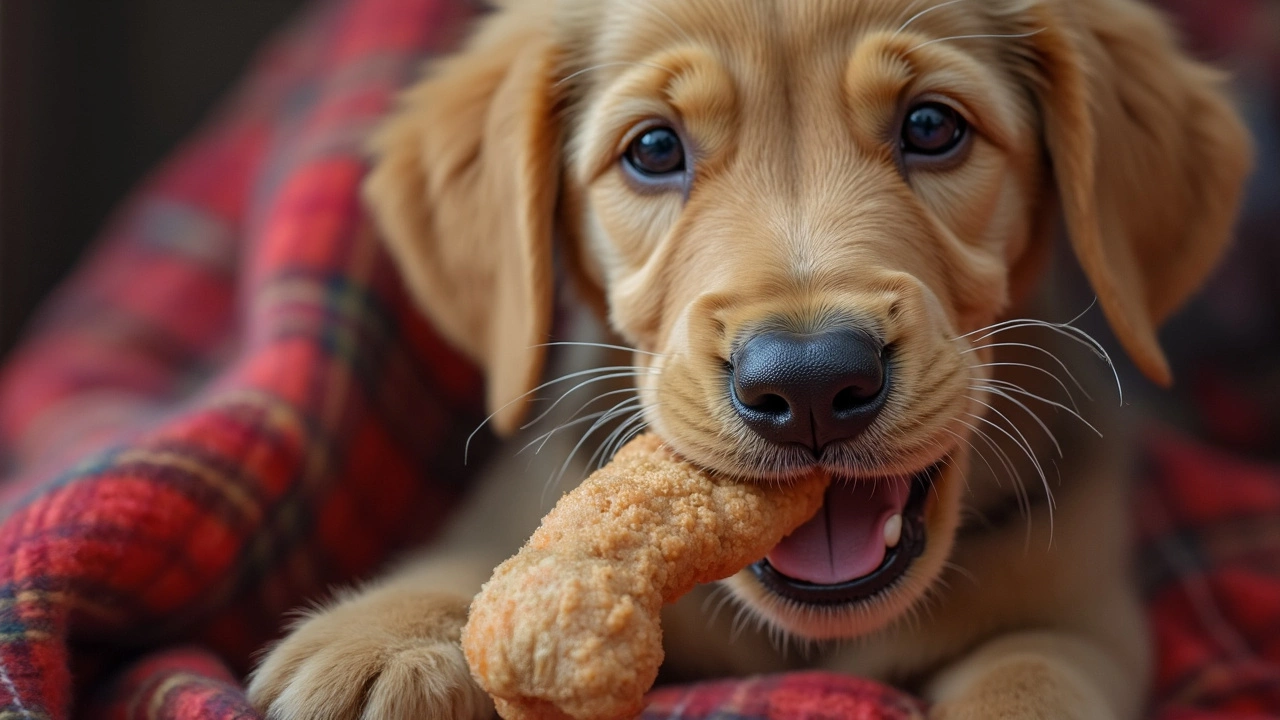
Homemade Chew Toy Hacks
If your wallet flinches every time you pass the pet store, don’t worry. You don’t have to drop cash on fancy toys. Some of the best puppy chew toys can be made from stuff you already have at home, and a lot of people swear by them. Plus, you get total control over what your puppy chews, so it’s a win for both safety and your budget.
Here’s a quick look at simple DIY ideas:
- Frozen washcloths: Grab an old (but clean) washcloth, soak it in water, and pop it in the freezer. When it’s icy, hand it over. Puppies love the cold on their gums, especially when they’re teething.
- Knotty t-shirts: Take an old t-shirt (plain cotton, no decorations), cut it into strips, and knot it tightly. Toss it in the wash before using, just in case. This gives your puppy something stretchy but tough.
- DIY rope toys: Braid strips of fleece or denim tightly and knot both ends. Not only is this sturdy, but you can make it any size. Just supervise—once it starts fraying, toss it out.
- Treat ice cubes: Freeze low-sodium broth or some of your puppy’s kibble in water inside an ice cube tray. Keeps them cool and busy for a while.
Puppy expert Dr. Ian Dunbar says, "Safe homemade chew toys are about matching the toy’s size and toughness to your puppy’s chewing style—always supervise, and when in doubt, swap it out."
A homemade toy doesn’t mean anything goes. Always skip things like strings (they can wrap around tongues), plastic bags, or anything that could break into chunks. And never use anything treated with chemicals, paint, or glue. Wash toys regularly—my dog Rufus once rolled his in the mud then tried to drag it onto my bed. Not fun.
Here’s a little table to compare homemade toy ideas, their safety, and best uses:
| Homemade Toy | Best For | Safety Tip |
|---|---|---|
| Frozen Washcloth | Teething pups | Remove loose threads regularly |
| Knotty T-shirt | Puppies that tug/chew lightly | Use plain, chemical-free cotton |
| DIY Rope Toy | Strong chewers | Look for fraying, replace as needed |
| Treat Ice Cubes | Puppies who get bored fast | Avoid flavored cubes on carpets |
Homemade options aren’t just a lifesaver for your budget—they let you keep things fresh by rotating different textures. Just remember, when it comes to puppy chew toys, supervision always wins the day. Nothing replaces a watchful eye.
How to Manage Puppy Chewing
Puppy chewing can drive you up the wall if you’re not prepared, but there are some solid tricks to get things under control. Chewing is totally normal for puppies, especially between 3 and 6 months when teething peaks. The trick isn’t stopping it—but steering it to safe and approved targets.
The heart of the solution? Offer your puppy a variety of approved puppy chew toys and keep the forbidden stuff (shoes, phone chargers, sofa corners) out of reach. Consistency is the magic word. Every time your puppy tries to chew something off-limits, calmly say, “No,” and swap it with a safe chew toy. The repetition helps your puppy learn what’s fair game and what’s totally off-limits.
- Make safe chew toys part of every room your puppy roams.
- Use crate training or a puppy pen when you can’t supervise, so nothing valuable becomes a chew project.
- If you catch them chewing something they shouldn’t, don’t punish them—redirect instead.
- Mix it up! Rotate different chew toys every few days to keep their interest high.
- Give enough daily exercise and playtime. A tired puppy equals less destructive chewing.
- Freeze rubber toys with wet kibble or peanut butter inside—super effective for teething relief.
Here’s what usually happens with different levels of management:
| Management Style | Results After 1 Month |
|---|---|
| No guidance | Chewing stays wild, most household items at risk |
| Occasional redirection | Some improvement, but random chewing still happens |
| Consistent redirection & toy rotation | Most puppies settle, chewing sticks to approved toys |
Praise your puppy when they pick up the right toy. Treats or happy words really reinforce good choices. And don’t forget, patience is everything—no one raises a perfect puppy without a few chewed-up surprises along the way.
Red Flags: When a Chew Toy Goes Wrong
A puppy toy that looked perfect in the store can turn into a problem fast. The main thing to watch out for: any toy that gets chewed down to bits or pieces small enough to swallow. If your puppy gnaws a toy down to the size of a grape, it’s a choking hazard or even a stomach blockage waiting to happen.
Toys that splinter (like cooked bones, thin plastic, or some cheap wooden toys) are a hard pass. That’s not just my opinion—the American Veterinary Medical Association (AVMA) warns,
“Hard or brittle chew toys can break a puppy’s teeth or splinter, causing mouth injuries or even blockages if swallowed.”
Pay attention to anything that feels too hard. There’s a simple rule called the “thumbnail test”—if you can’t press your thumb into the toy and make a dent, it could break your puppy’s teeth. Hard nylon bones, antlers, or rocks (yes, some pups chew rocks) are some of the biggest culprits. My dog Rufus once cracked a tooth on a so-called "dental bone" before I knew this rule.
Check every toy daily for signs of damage. Things like:
- Chunks missing
- String, squeaker, or stuffing coming out
- Sharp edges or rough, chewed-up spots
- Sticky or odd smells that weren’t on the toy when new
Swallowing bits of toy can land your puppy at the emergency vet. According to the Pet Poison Helpline, toys are one of the top five non-food items vets remove surgically in dogs under one year old. Here’s a quick data table on toys swallowed by puppies:
| Toy Type | Frequent Issues | % of Toy Emergencies (Dogs < 1 yr) |
|---|---|---|
| Plush/Squeaky | Swallowed stuffing/squeaker | 42% |
| Nylon Bones | Broken pieces ingested | 28% |
| Rawhide | Choking/blockage | 21% |
| Rope Toys | Ingested string/fibers | 9% |
If you want to keep your puppy chew toys safe, toss them the minute you see damage. When in doubt, swap it out. It’s better to buy a new toy than deal with puppy surgery—or the heartbreak that comes with it.
